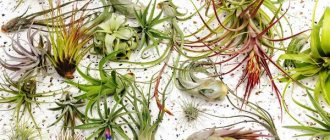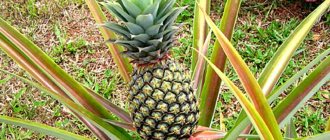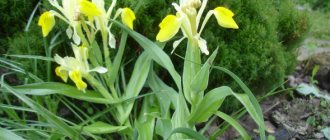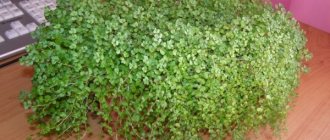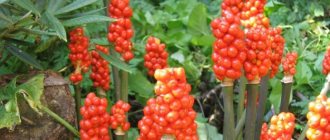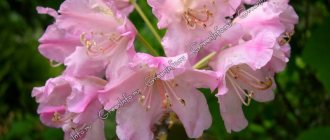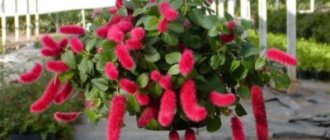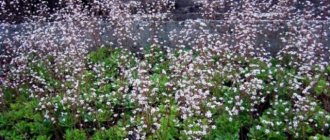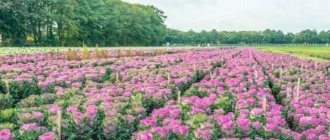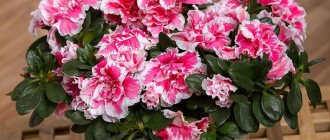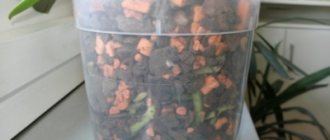|
Representatives of the bromeliad family are so diverse in appearance that sometimes it is hard to believe that they are close relatives. Take, for example, the pineapple with its tasty fruit, the aechmea with its beautiful inflorescence, or the tillandsia usneiformes, which forms thickets in the form of a long beard on the trees.
Quite unpretentious, not requiring the creation of special conditions for long-term flowering, favorite plants of phytodesigners, bromeliads are often used to decorate special events and exhibition stands. They are attracted by their inflorescences and bright leaves, which can remain decorative for several months. Compositions of bromeliads, ferns and orchids are very unusual.
To understand what conditions are needed to successfully grow bromeliads, it is useful to familiarize yourself with their growth in their natural habitat, because there are no domestic plants, but there are plants that we took from the wild and are trying to grow them.
Various natural adaptations developed during the process of evolution make it necessary to take them into account when caring for bromeliad plants. But most species grown at home require approximately the same care.
The most commonly cultivated include:
|
|
- Large-tufted pineapple - compact varieties of edible pineapple and bracted pineapple - with decorative, but inedible, fruits and variegated striped leaves.
- Billbergia drooping with a loose spike-shaped inflorescence.
- Vriesia shiny and Vriesia keeled with flat or branched spike-shaped dense inflorescences.
- Guzmania reed and Guzmania single-spike, as well as hybrid forms with bright rosette inflorescences of different shades at the top of the shoot.
- Cryptanthus are species and hybrids, cultivated for the beautiful color of their leaves, collected in a basal rosette resembling a starfish.
- Neoregelia Carolina, which turns the upper leaves red before flowering. The variegated varieties are especially beautiful.
- Nidularium Innocentia is a plant that looks similar to neoregelia.
- Tillandsia is blue with a beautiful pink-violet flat inflorescence and blue flowers that appear from the axils in turns and do not last long.
- Aechmea striped with beautiful cross-striped wide gray leaves and a soft pink inflorescence on which small brightly colored flowers open.
- Aechmea Blue Rain with unusual blue spike-shaped inflorescences, of hybrid origin.
All of these species, with the exception of pineapple, which is a terrestrial plant, lead an epiphytic lifestyle in warm and humid tropical forests, often settling in tree crevices where rotten remains of leaves accumulate. The root system of such plants is not very developed; there are feeding and anchoring roots. Plants are adapted to receive part of their nutrition and moisture from precipitation, rain and fog.
Family Bromeliads
Plants in the Bromeliad family originate from the tropics, and several species have been found in the American subtropics and one in western Africa.
Bromeliads are epiphytes, meaning they grow on trees, rocks or other plants and obtain water and nutrients from the air and rainwater. Unlike most plants, they do not receive the necessary substances from the root system. Their roots are just a way to join the growing support.
Bromeliad
Almost all members of the Bromeliad family are characterized by the presence of a short stem and long urea-shaped leaves that are attached to each other and form a funnel. The structure of the leaves is simple: in some representatives of the species they are wide and dense, in others they are thin with a loose structure. Depending on the species, the inflorescence can be capitate, racemose or paniculate.
Types and characteristics of indoor plants from the Bromeliad family
There are about 3,000 different types of these flowers, among them: cryptanthus, guzmania, vriesia, indoor pineapple, aechmea, neoregelia, billbergia, acanthostachis, neoregelia, nidularium and many others.
Note! Those who have heard the name Bromeliad de Zapata and want to buy this flower need to know that it does not exist, it is an April Fool's joke.
Pest protection
If you do not follow the rules for caring for a bromeliad flower, you can expect that at some point it may be affected by serious diseases. Most of them are caused by parasites, which, once on a flower, act to destroy the plant.
Mealybugs and scale insects pose a great danger to bromeliads. The harm of the latter is due to the fact that they feed on the juice that is obtained from the stems and leaves. At the same time, liquid always remains after them, which creates favorable conditions for the development of fungus. No less problems arise when bromeliads are affected by the thyroid glands. To remove these pests, they must be collected by hand. After this, the leaves of the plant need to be treated with a soap solution, and finally sprayed with a tobacco solution.
Moreover, even such treatment does not guarantee that these insects will not subsequently appear on the flower. Therefore, after the measures taken, it is necessary to constantly monitor the condition of the plants. Mealybug control measures involve its collection, which is carried out manually. Next, the plants must be treated with a solution of green soap. The best effect can be achieved only if this operation is carried out with three repetitions. This gives confidence that the bromeliad will not be affected by this pest again in the coming months.
How to care for these plants at home
Bromeliad - home care, watering and propagation
Almost all bromeliads are adapted to warm, humid, shady climates. Their original habitat is moist and they grow under the shade of trees or are attached to them.
Important! Bromeliads do not tolerate exposure to large amounts of direct sunlight.
Temperature, humidity, light
The optimal temperature for bromeliads is considered to be in the range of 15-26 ºС, but they can survive in very hot climates.
Bromeliad indoor plants require 60% air humidity. This level is difficult to maintain, especially in winter when the house is heated.
Ways to humidify the air:
- place a humidifier near the plant;
- place a tray with moisture, for example, place pebbles and decorative elements in a deep large bowl and fill with water;
- move several plants closer to the bromeliad, due to the process of transpiration, the humidity next to it will increase;
- Regularly spray the flower from a bottle with an aerosol tube.
Light
Not all varieties of bromeliads prefer bright, indirect light; some grow better in constant shade. In winter, they need to be moved to a south-facing window.
Optimal soil for Bromeliads
For these representatives of the fauna, loose soil is suitable, which mainly consists of high-moor peat with the addition of leaf soil and sand. The soil for Bromeliads is diluted with bark, coal, coniferous soil, and chopped sphagnum.
Penguin
If you look at a photo of a bromeliad plant of this species, you will notice that it has a multi-flowered paniculate inflorescence. Its branches are always narrow pyramidal, consisting of 12 flowers with a slight powdery coating. The bracts grow no more than 3 cm long, and the flowers themselves on pedicels reach approximately 6 cm. The sepals are arranged freely, they have the shape of a triangle from one and a half to three centimeters long. The usual color for them is pink, with a small white border around the edges and at the base. After the flowers fall, small fruits appear. They are edible, but very sour in taste.
Tillandsia - a plant without roots
Hatiora - home care: air humidity and other requirements
Tillandsia aerial or atmospheric is an exotic plant of the Bromeliad family. The most popular representative of the genus, requiring difficult care.
Tillandsia
The main way to obtain moisture from Tillandsia without roots is through the leaves, which need to be sprayed regularly. To grow this flower, it needs to be provided with a cozy atmosphere with diffused lighting (about 14-15 hours a day), without drafts, and with clean fresh air. The optimal temperature for this representative of Bromeliads is 20-25 ºС.
How to replant
Tillandsia rootless requires replanting only once after purchasing it in the store. When the plant fades, it dies, so it does not need to change the soil.
Variety of species
There are about 500 species of this representative, including: Tillandsia Albida, purple, broad-leaved, moss-like, large, two-flowered, Butza, etc.
Transfer
Wear gloves when handling bromeliads. The plant is not poisonous, but most varieties of the flower have sharp thorns at the tips of the leaves, which are easy to injure. How to replant a flower:
Place a layer of drainage consisting of broken bricks, expanded clay or pebbles at the bottom of the pot. Please note that these materials should occupy a third of the volume of the container
Carefully remove the flower along with the earthen lump from the old pot. To make this easier, moisten the soil 3-4 hours before the event.
Place the bromeliad in a new pot without destroying the earthen ball. Fill the voids with prepared soil. Make sure that the root collar is level with the ground. Compact the soil and water it with warm, settled water.
After replanting, place the flower in a suitable place and provide proper care for the bromeliad at home.
Pineapple as an indoor potted plant
Solanaceae family - characteristics of nightshades
Homemade pineapple will surprise not only guests at home, but will also delight the owner’s eye all year round. Indoor pineapple is a decorative flower.
Homemade pineapple plantation
Caring for indoor pineapple
You can grow a pineapple at home in a pot if all the conditions are created and caring for it does not require much effort. This plant does not need pruning, only replanting in spring and summer. To plant a pineapple, you need to cut off a rosette, which is washed in a solution of potassium manganese. Next you need to sprinkle the cut with ash and let it dry. Then the rosette is transplanted into a pot (0.4-0.6 l), into which a drainage layer and a loose earthen mixture of leaf humus, turf soil, sand and peat are poured (ratio 1:2:1:1).
A description of how to grow pineapples at home is presented below.
Temperature, humidity and light
Indoor pineapple is a heat-loving plant, a unique specimen of the floristic kingdom. In summer it grows well at 25-28 °C, and in winter 22-24 °C.
Pineapple does not require high levels of air humidity and thrives in dry climates. Requires regular spraying with water at room temperature.
Important! This representative of Bromeliads is light-loving, but does not need direct sunlight.
Watering mode
Pineapple should be sprayed regularly and also watered with settled water at room temperature every day.
Important! In winter, the flower should dry out; it does not need to be sprayed or watered a lot.
Soil and fertilizers
The soil for the plant should consist of expanded clay, charcoal, broken bricks and soil.
You can add mullein infusion to the mixture (for 4-5 days) during the period of active plant growth.
Note! Alkaline fertilizers and wood ash should not be added.
Accommodation
The most spectacular way to place bromeliads in your home is with a bromeliad tree. It’s easy to make, the plants on such a tree feel comfortable, and it’s easy to care for them. If you are afraid to immediately take on the unknown, get yourself a couple of young specimens and build a tabletop version of a bromeliad tree.
How to make your own bromeliad tree
- You will need some nice dry driftwood. Before use, it must be treated - washed and dried.
- Then secure the driftwood in a pot or on any stand so that it does not fall or tip over.
- Remove the prepared plants from the pots and wrap their roots with moss. Using mylar thread or polymer-insulated wire, attach the bromeliads to the branches.
- Plant 1-2 plants below, you can decorate pots with plants. You can, after freeing the flowers from the pots, wrap their roots in moss.
- If you add a few more atmospheric tillandsias, as well as orchids, to the composition, it will turn out just like in nature.
Guzmania (guzmania): plant description and flower
What is Guzmania? Guzmania is a perennial plant of the Bromeliad family. Guzman bromeliads are very easy to grow, and their bracts will decorate your home all year round.
Guzmania
Botanical description of popular guzmania species
There are over 120 different guzmania plants that are native to South America. For example: blood-red guzmania, mosaic, Donnell-Smith, Tempo, etc.
Features of care
The bromeliad guzmania plant requires a well-lit room, so it should be placed on the windowsills of an east or west window.
Important! Avoid exposure to direct sunlight.
The appropriate air temperature is from 25 ºС in summer and 18 ºС in winter.
The plant needs to be watered with settled warm water into an outlet every day in the summer and twice a week in the winter.
When guzmania flowers die, the peduncle and dried leaves are cut off.
Note! The plant does not need feeding.
Childbirth
- Acanthostachys Klotzsch
- Aechmea Ruiz & Pav. — Ehmeya
- Alcantarea (E.Morren ex Mez) Harms
- Pineapple Mill. - A pineapple
- Andrea Mez
- Androlepis Brongn. ex Houllet
- Araeococcus Brongn.
- Ayensua LBSm.
- Billbergia Thunb. — Bilbergia
- Brewcaria LBSm., Steyerm. & H.Rob.
- Brocchinia Schult.f.
- Bromelia L. - Bromeliad
- Canistropsis (Mez)Leme
- Canistrum E.Morren
- Catopsis Griseb.
- Connellia NEBr.
- Cottendorfia Schult.f.
- Cryptanthus Otto & A. Dietr.
- Deinacanthon Mez
- Deuterocohnia Mez
- Disteganthus Lem.
- Dyckia Schult.f. — Dikkia, or Dikiya
- Edmundoa Leme
- Encholirium Mart. ex Schult.f.
- Fascicularia Mez
- Fernsea Baker
- Fosterella LBSm.
- Glomeropitcairnia Mez
- Greigia Regel
- Guzmania Ruiz & Pav. — Guzmania, or Guzmania
- Hechtia Klotzsch
- Hohenbergia Schult.f.
- Hohenbergiopsis LBSm. &Read
- Lindmania Mez - Lindmania
- Lymania Read
- Mezobromelia LBSm
- Navia Schult.f. — Navia
- Neoglaziovia Mez
- Neoregelia LBSm. — Neoregelia
- Nidularium Lem.
- Ochagavia Phil.
- Orthophytum Beer
- Pepinia Brongn. ex André
- Pitcairnia L'Her.
- Portea K.Koch
- Pseudaechmea LBSm. &Read
- Pseudananas Hassl. ex Harms
- Puya Molina
- Quesnelia Gaudich.
- Racinaea MASpencer & LBSm.
- Ronnbergia E.Morren & Andre
- Steyerbromelia LBSm
- Tillandsia L.
- Vriesia Lindl. — Frizeya, or Vriesia
- Werauhia JRGrant
- Wittrockia Lindm.
Photos of individual species:
Cryptanthus: home care
Cryptanthus is a plant of the Bromeliad family that does not have a stem, but only long leaves collected in a rosette. Hence the name "earth star".
Cryptanthus
This flower requires an air temperature of 22-24 ºС in summer and 18-20 ºС in winter.
Cryptanthus cannot be grown in dry air conditions, so it must be well moistened. It is better to place a humidifier nearby.
General information about Bromeliads
Bromeliad flowers are understood as herbaceous perennial plants. These are low bushy rosettes with a strong root system. The stem of the plant is poorly developed. A group of leaves collected in a funnel can be seen above the surface of the earth. These are fleshy, leathery greens. Unusual coloring is often present.
Often the variegated leaves are supplemented with safe thorns. In the central part of the funnel, a tall peduncle grows between the leaves. At the top of the “stick” a racemose inflorescence with intense color is formed.
The spectacular appearance of flowers largely determines interest in the plant. Flower growers know more than 30 varieties of Bromeliads.
Billbergia drooping
Billbergia drooping is a herbaceous perennial epiphyte whose leaves resemble cereals.
Billbergia drooping
Caring for a houseplant Billbergia
This plant of the Bromeliad family is unpretentious and does not require complex care.
The air temperature for the growth of Billbergia is needed not lower than 12 ºС.
This plant does not require bright light and lives well in poor light.
Humidity should be maintained by spraying the leaves.
Watering mode
Billbergia requires frequent watering in the warm season (avoid stagnation of moisture). The top layer of soil should dry 2 cm, then water the plant again. In winter, the watering schedule occurs once a week.
Soil and fertilizers
Bilbegia is not picky about soil, so you can choose any water- and breathable loose soil mixture.
Feeding occurs 2 times a month. Fertilizers are used for Bromeliads.
Important! You cannot add fertilizer with a high nitrogen content.
Classification
The family Bromeliaceae is currently placed in the order Poales.
Subfamilies
The Bromeliaceae family is divided into eight subfamilies:
- Brocchinioideae
- Lindmanioideae
- Tillandsioideae
- Hechtioideae
- Navioideae
- Pitcairnioideae
- Puyoideae
- Bromelioideae
Bromeliaceae were originally divided into three subfamilies based on seed morphological characters: Bromelioideae (seeds in baccata fruits), Tillandsioideae (pinnate seeds), and Pitcairnioideae (seeds with wing-like appendages). However, molecular evidence has shown that while Bromelioideae and Tillandsioideae are monophyletic, Pitcairnioideae are in fact paraphyletic and should be divided into six subfamilies: Brocchinioideae, Lindmanioideae, Hechtioideae, Navioideae, Pitcairnioideae. Puyoideae. Puyoideae.
Brocchinioideae is defined as the most basal clade of Bromeliaceae based on both morphological and molecular data, namely genes in chloroplast DNA.
Lindmanioideae is the next largest basal clade, distinguished from other subfamilies by its convoluted sepals and chloroplast DNA.
Hechtioideae is also determined based on chloroplast DNA analysis; similar morphological adaptations to arid environments also found in other groups (namely the genus Puya)
, are attributed to convergent evolution.
Navioideae is separated from Pitcairnioideae based on its cochlear sepals and chloroplast DNA.
Puyoideae has been reclassified several times, and its monophyly remains controversial according to chloroplast DNA analyses.
Aechmea flower: home care
The plant should be placed in a brightly lit place, for example, on a south-facing window.
In summer, a temperature of 22-26 ºС is required, and in winter - 15-18 ºС.
Air humidity should be maintained above average.
The flower requires bright diffused light.
Ekhmeya
Watering mode
During the warm period, it requires abundant watering immediately after drying the top layer of soil. Pour water into the leaf funnel. In winter, watering is reduced to once every 2 weeks.
The soil for the flower should include sand, foliage and peat.
The plant should be fertilized with a mineral solution for Bromeliads.
Main groups
Atmospheric bromeliads.
So named because:
- firstly, they do not develop in the soil, but at the ends of the shoots of tree species and succulents due to the lack of roots;
- secondly, water is drawn, in fact, from atmospheric moisture - dew, fog, rain.
A striking representative is the gray tillandsia, of which there are more than 400 species on the American continent.
Reservoir bromeliads.
Everything is explained here too. Plants of this group have a funnel-shaped rosette formed by leaves. This is a kind of reservoir in which moisture accumulates. Most reservoir bromeliads are epiphytes. The latter develop mainly on trees, less often on the green forest floor layer. Among them there are a lot of brightly colored plants: this applies to both foliage and reproductive organs.
Typical representatives of reservoir bromeliads: gusmania (Antilles, Brazil, Florida), neorgelia (Brazil, Peru), arnesia, aechmea (Mexico, Argentina), cryoptanthus (Brazil).
Terrestrial bromeliads.
These are the most common plants: with roots, “living” in the soil substrate. They have fleshy, mostly hairless leaves with a glossy surface. Pineapple falls into this category.
Vriesia Astrid: description of the plant and care features
Vriesia has an unusual structure - it consists of a rosette of leaves in the shape of a crown. The height of the plant is from 40 to 80 cm. Vriesia produces bright peduncles that look like feathers. At home she is not picky.
Vriesia Astrid
The air temperature should range from 24 °C to 28 °C in summer and not lower than 18-20 °C in winter.
Air humidity is required high (from 70%). The flower needs regular spraying.
You need to water the plant after the top layer of soil has dried 2-3 cm with warm water. During the spring-autumn period, watering is carried out 2 times a month.
Fertilize the soil with a special solution for Bromeliads.
Vriesia splendens or Vriesia splendens
A variety of the Bromeliad family that is best suited for growing at home. On the leaves, the flower has yellow horizontal inserts and small scales to absorb moisture. Blooms in February and June.
Vriesia Splendens loves warmth (25-28 °C), so the pot should be warmed up in winter.
Note! Lighting is required very intense, watering abundantly in summer and moderately in winter.
Atmospheric
These bromeliad plants prefer to settle on the spines of huge cacti, at the ends of tree branches, etc. They have a very weak root system, and in some cases the roots are not developed at all. They do not have bright leaves, but the shape of the plants is very diverse. The most common and well-known plants of this group are gray tillandsias. Under natural conditions, they obtain water from drops of dew or fog settling on the leaves. They get their food from dust particles. They should not be watered, but only sprayed with soft water from a spray bottle. Atmospheric bromeliad plants need a lot of light, but diffused. They do not require a special earthen substrate; it is enough to secure them well on a decorative stand.
Neoregelia: care at home
Neoregelia is a low plant of the Bromeliad family, which has a massive root without a stem and consists of several leaf rosettes. It grows up to 20 cm. The leaves have a characteristic dark green color, and in winter they change it to red. A short but thick inflorescence grows in the center of the flower.
The natural habitat for neoregelia is swampy, shady tropical forests and rocky mountain slopes.
Neoregelia
Types and varieties for growing at home
Among the varieties of neoregelia, about 60 representatives are known. At home, species such as Carolina, marbled nonorgelia, beautiful, gloomy, blister tiger, etc. are grown.
The flower requires bright, natural lighting. Avoid exposure to direct sunlight.
Neoregelia needs to be watered 2-3 times a week, in winter - 2 times a month.
High air humidity is required (at least 60%). The foliage should be sprayed and wiped regularly.
Acceptable temperature is within 20-25 °C in summer, and in winter - not lower than 16 °C.
The difficulty of planting members of the Bromeliad family depends on the species. Most varieties are easily adapted to home conditions. When choosing a flower, you should take into account its preferences for temperature, moisture, lighting, frequency of watering, replanting, fertilizing the soil, etc. In order for the plant to take root, it is necessary to satisfy all its whims, then it will please the eye all year round.
Content temperature
This tropical beauty easily tolerates temperature changes and can easily withstand heat of +38 °C in summer. In winter, a drop to +12 °C is permissible. But still, bromeliads will be more comfortable at any time of the year at +23…+25 °C. Although in winter it is still worth placing an exotic guest in a room with +18 °C.
In summer, do not be afraid to take bromeliads out onto the balcony and even into the garden. Then the plant will be saturated with fresh air, which will have a positive effect on its decorative effect. But choose areas for cultivation in partial shade, protected from wind and rain.
In winter, do not allow the plant to suffer from drafts. But ventilate the room regularly. After all, stagnation of air is detrimental to a flower.
Reproduction
To obtain a new plant, bromeliads can be propagated at home. You can do this in two ways:
- By shoots. As soon as the plant fades, new shoots - shoots - appear at the base of the rosette. They are left untouched for 2–3 months and waited for them to get stronger. And then they cut it with a sharp knife, and sprinkle the cut area with charcoal. A mixture of peat and sand is poured into the container, and the shoots are planted. Cover the top with film. Periodically moisten and ventilate. After new leaves appear, the greenhouse is removed. Rooting occurs within 1–2 months. After a year, the plant is transplanted into new soil. The first flowering can be expected after two years.
- Seeds. A complex and ineffective method. Seed material is purchased at the store. Sow seeds only in pre-disinfected soil. The container is filled with a substrate of leaf soil, sphagnum and sand. Seeds are placed on top. Keep in partial shade and regularly moisten the soil. The first shoots appear after 3–4 weeks. Their picking is carried out after the appearance of three leaves. They are transplanted to a permanent place after 2–3 months. Flowering occurs after 5–10 years.
Bromeliads are easy to propagate at home; the main thing is to choose the right method.
